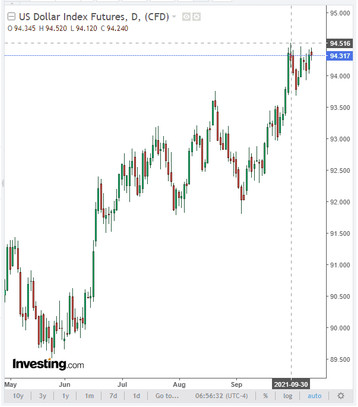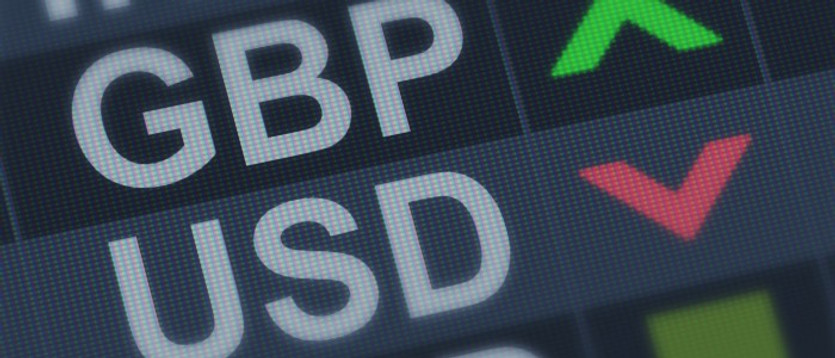As shown by data released this morning by the UK Office for National Statistics, the unemployment rate for the three-month period May-July fell to 4.5% from 4.6% in the previous period. The rise in the number of vacancies to new all-time highs shows that the demand for labor resources remains strong. At the same time, the average earnings (without premiums) increased by 6% over the reporting 3-month period, which turned out to be higher than the forecast of growth by 5.9%.
Strong UK employment data raise the likelihood that the Bank of England may soon move to raising interest rates amid rising inflation. Last weekend, two representatives of the Bank of England spoke out in favor of such a development of events. Recent statements by representatives of the central bank about inflationary risks suggested that the tightening of monetary policy of the Bank of England will take place in November (the next meeting of the Bank of England is scheduled for November 4).
According to the Bank of England's estimates, annual inflation accelerated in the 3rd quarter to 3.2% (against the August estimate of 3%). The bank's economists expect further acceleration of inflation and its exceeding the 4% level in the 4th quarter of 2021, amid rising prices for energy and goods.
At its meeting on September 23, the Bank of England kept its base interest rate at 0.1% (it is at 0.1% since March 19, 2020), and the volume of asset redemptions - at 895 billion pounds (the volume of redemption of government bonds is 875 billion pounds, and another 20 billion - the volume of redemption of corporate bonds).
And in late September, Bank of England Governor Andrew Bailey hinted that despite weak economic growth, the Bank of England may soon raise interest rates to moderate inflation. In his opinion, interest rates may be raised before Christmas.
Nevertheless, the pound is still rather restrained in its response to the positive macro data and the prospect of an imminent increase in the interest rate by the central bank. Market participants are concerned about a possible slowdown in the growth of the British economy due to the curtailment of stimulus measures and the rapid rise in energy prices.
The growth of wages in the UK, among other things, is also driven by a labor shortage, which will remain a problem until at least mid-2022, economists say. They also fear that inflation, fueled by rising energy prices amid scarcity of free resources in the labor market, will cause widespread damage to the economy.
Thus, the above factors are holding back the strengthening of the pound.
Additional pressure on the pound is exerted by the report of the British Retail Consortium (BRC), published yesterday evening, according to which the volume of retail sales in September decreased by 0.6% (in annual terms) against the forecast of growth by 0.3% and after growth by 1. 5% in August.
The official September retail sales report of the UK Office for National Statistics will be released next week. Changes in retail sales are generally considered to be an indicator of consumer spending. Well, since a significant share of the UK's GDP, as, indeed, of other developed countries, is taken by consumer spending, the decline in this indicator is another negative factor for the pound, indicating a decrease in consumer confidence and their faith in the country's economy. In August, retail sales, as measured by the Office for National Statistics, fell 0.9% in the UK after falling 2.5% in July.
Thus, summing up our analysis, we can expect a weakening of the pound in the short and medium term, despite the fact that the Bank of England is approaching the stage of raising rates. The negative effects of the pandemic, supply problems, Brexit and rising energy prices, fueling inflation, could be key factors and greatly slow down the recovery of the British economy.
For the 7th day in a row, the GBP / USD pair has been trading near the 1.3600 mark, through which the short-term balance line, expressed as a 200-period moving average on the 1-hour chart, passes (see Technical Analysis and Trading Recommendations). A confirmed breakout of this level in one direction or another will determine the direction of the dynamics of the GBP / USD pair in the medium term.
Meanwhile, the DXY dollar index, which reflects the dollar's value against a basket of 6 major currencies, maintains positive dynamics, remaining in the area of the local and 13-month high of 94.52, reached the week before last.

The US Department of Labor's monthly report released on Friday indicated weaker growth in new jobs outside the agricultural sector, but signaled further increases in average wages and a decline in overall unemployment. Despite the controversial data in the report, investors remain confident that the US Federal Reserve will announce a program to reduce the existing stimulus by the end of this year.





